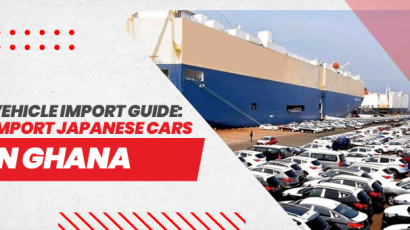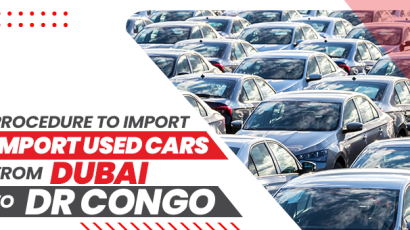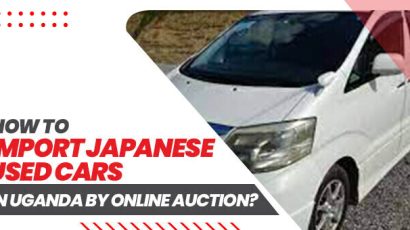
With time, after the long civil war, Congo is enjoying long-term stability. As a result, the country is opening up for importing used cars. However, the government of the country places strict regulations that importers must follow. It was announced in 2013 that the government would be applying these regulations on importing second-hand vehicles.
If you are looking forward to importing an automobile to Congo, you’ll find several information resources on the web. It is necessary to find reliable and relevant sources that ensure the right vehicle import guide in DR Congo.
Here we have compiled all the guidelines and information that you need to know before importing a vehicle.
Vehicle Import Guide in DR Congo
Globalization has facilitated trade between countries by opening up borders. Thus, countries around the world are importing vehicles from other countries to get their desired cars. However, the process is influenced by government policies and regulations that set some restrictions on trade.
Before you begin, compute the importation cost and see if it’s a feasible option or not. The calculation involves the expenses that are required for the import to Congo. It includes the Free on Board (FOB) price and the Cost of Insurance Freight (CIF).
The FOB is the cost of the automobile, eliminating the transportation fee, coverage fee, and scrutiny fee. On the contrary, CIF is the sum of FOB and inspection, insurance, and freight fee.
Here is a car import guide in DR Congo:
- If the used buses or cars have less than 10 seats and are more than 10 years old, these cannot be imported.
- The used automobiles with 10 or more seats cannot be traded in if they are more than 7 years old according to the vehicle import guide in DR Congo.
- The used lorries that are more than 10 years old cannot be imported.
Along with this, the following documents are required for the customs clearance as a part of the vehicle import guide in DR Congo:
- Legal conveyance certificate
- Vehicle inspection certificate
- Original car registration documents
- Legal copy of the country of origin of the vehicle
When importing used vehicles, it is necessary to comply with this decree. Or else, the cars will be damaged or reexported at cargo expenses.
For the imports, the following two shipping options are available:
- Through container
- Roll-on-roll-off (Ro-Ro) method
You are required to choose one of the methods according to the car you are importing. For example, for a luxury car, you’ll need an optimum protection container. It’s the ideal option. Through this, your vehicle will be secured with straps inside the container to ensure its safety.
Contrarily, if you are looking for low-cost options, it’s best to choose Ro-Ro shipping. The shipping technique is not as secure as a container, but it involves less time.
DRC Taxes, Duties and Regulations
When importing vehicles in Congo, you must be aware of the DRC taxes and duties. In addition, there are importation fees involved in the process, which vary according to the type of automobile you are importing.
During this process, there is a Value-added Tax (VAT) included. It ranges from 8 to 13%, depending on the type of vehicle. Additionally, you also need to pay the import duties, which range between 8 to 46%.
For the used Japanese vehicles, including the trailers, tractors, and semi-trailers that are more than 15 years old, you’ll pay 12% excise tax.
Moreover, a shipping fee is included in the process, which varies according to the port of delivery selected by you. In the DRC, shipping is managed through three main delivery points. These include the following:
- Port of Matadi – It’s the most pricey port that also consists of container freight costs.
- Port of Dar Es Salaam – It’s a strategic location and offers a middle-of-the-spectrum freight fee.
- Port of Mombasa – through this, you’ll get the most reasonably priced cargo fees.
Along with the taxes mentioned above and duties, according to the car import guide in Congo, you’ll have to pay a port clearing agent fee too. In addition, used cars are subject to some parafiscal levies. For more details, read on:
- It includes administration fees of 2% of the CIF.
- Then, there is an inspection fee that is 1.5% of the FOB.
- Thirdly, you will pay the Congolese Control Office fees, which is 1.5% of the CIF.
- There is also an Office de Gestion du Fret Maritime fee – 2% of the CIF
- Lastly, the Funds for the Promotion of Industry fees, which is 2% of the CIF.
During the trade, it is always recommended to have knowledge about the taxes, duties, and regulations. It will help you in avoiding any trouble or challenges. You can also contact the agents or auto dealers that can help you in getting through this process conveniently.
Policies of Importing a used Japanese Car in DR Congo
The Japanese cars have achieved the position among some of the topmost cars in the world. Hence, the demand for used Japanese cars has always been high. On your way, you’ll easily find people driving Japanese vehicles around you on the roads. These vehicles offer a complete package of features, reliability, and affordability.
Due to the outstanding quality of Japanese cars, the used ones are high in demand in various countries. Hence, these cars are commonly being imported.
Assessing the vehicle import guide in Congo, it has been seen that there are some policies and regulations. You cannot miss these. These guidelines make it easier to manage the overall trade. We have listed these here:
- There are three ports, and any of these can be chosen for the trade.
- The age and condition of the car must be according to the policies.
- The required documents must be accessible during the course of action.
- Congo only authorizes the left-hand drive automobiles.
- The trader has to pay the customs duties and VAT along with other taxes.
The best way to manage the import is to find the right supplier. For this, you need to spend some time searching on the web. During your search, you’ll come across many dealers that claim to offer the lowest prices.
However, you must be aware of the shipping and trading costs before you make a deal. It’s better to avoid the hidden charges. Hence, choose a reliable dealer that is well-known in the market.
If you’re looking for a credible Japanese car dealer, you can contact SBT Japan. They have a range of used Japanese cars that meet the quality standards. Also, the company helps you inconveniently manage the trade to Congo.
Final Thoughts
Japanese vehicles have gained immense popularity around the world. Therefore, these are being imported by many countries. The Japanese automobile models are highly reliable and durable. According to Japanese laws, people maintain their vehicles and sell them for 5 to 8 years. So, other countries import these vehicles that meet the quality standards and offer the best features.
Before you plan to import a vehicle to Congo, go through the car import guide in Congo. It’s better to know about the taxes, duties, and import process and fee. Through this, you can choose the right shipping method that ensures your satisfaction.










